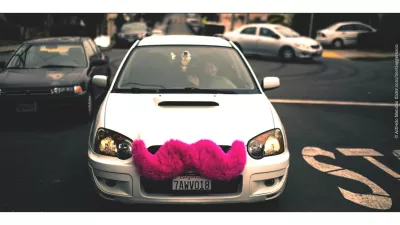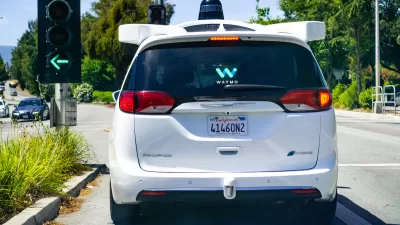Ride-hailing services have already conquered center cities, with companies like Uber and Lyft changing the landscape for commuters, visitors, and late-night revelers alike. The next challenge: solving the suburban-to-urban commute.

For all the attention ride-hailing has received over the past year or two, the vast majority of travelers in cities do not commute, do errands, and go out via smart phones and anonymous drivers. Those who are most bound to old-fashioned private automobiles are residents of suburban areas, which, by most accounts, are not dense enough and too far-flung to support the swarm of ride-hailing cars that make them so convenient in cities.
But, as ride-hailing becomes more commonplace and the major companies continue to add drivers and hone their strategies, the idea of replacing a punishing commute with a leisurely passenger trip is becoming more viable.
"The two major ride-hailing services are famously secretive about their data and business practices, so their prevalence in the suburbs is difficult to quantify. Anecdotally, their presence is growing, and it seems to be doing so organically. Both companies have followed remarkably fluid—some would say too fluid—business models that have enabled the companies’ driver-entrepreneurs, who are typically private contractors who drive their own vehicles and work according to their own schedules, to meet demand nearly wherever it arises. Ride-hailing is so appealing to some suburbs, in fact, that some suburban governments have actively welcomed the services."
Ride-hailing services can not only drive passengers all the way to the office and back. They can also serve as crucial links in the "first mile, last mile" problem that makes it difficult for suburbanites to use public transit, such as commuter rail, even when those services are geographically nearby.
For all their potential benefits, some see a growing rivalry between blatantly capitalist ride-hailing services and mission-driven services that exist to ease commutes and provide what advocates refer to as "true" ride-sharing services.
"The shiny, hip appeal of the major ride-hailing services has brought about what many in the media are heralding as a “ride-sharing revolution.” But some mobility advocates insist that these services are not revolutionary—and they’re actually not ride-sharing either. Whereas Uber and Lyft are largely urban creations, “true” ride-sharing—from nonprofit local transportation management associations (TMAs) and companies such as Carma, Sidecar and Flywheel (see sidebar), most of which operate in a limited number of markets—is a creature of the suburbs."
"Purists who support ride-sharing contend that the services differ in a crucial way: ride-sharing drivers, and the companies themselves, are not necessarily motivated by profit. They seek to match drivers and passengers for the sake of a social mission—mobility, environmental protection and cost savings. A driver who makes his passenger seat available and gets a break on gas and tolls is one thing. A driver who is trying to make a living is something else. Uber and Lyft are designed to indiscriminately pick up fares whenever and wherever they can."
FULL STORY: Ride-Hailing Apps Go the Extra Mile

Alabama: Trump Terminates Settlements for Black Communities Harmed By Raw Sewage
Trump deemed the landmark civil rights agreement “illegal DEI and environmental justice policy.”

Planetizen Federal Action Tracker
A weekly monitor of how Trump’s orders and actions are impacting planners and planning in America.

Why Should We Subsidize Public Transportation?
Many public transit agencies face financial stress due to rising costs, declining fare revenue, and declining subsidies. Transit advocates must provide a strong business case for increasing public transit funding.

Understanding Road Diets
An explainer from Momentum highlights the advantages of reducing vehicle lanes in favor of more bike, transit, and pedestrian infrastructure.

New California Law Regulates Warehouse Pollution
A new law tightens building and emissions regulations for large distribution warehouses to mitigate air pollution and traffic in surrounding communities.

Phoenix Announces Opening Date for Light Rail Extension
The South Central extension will connect South Phoenix to downtown and other major hubs starting on June 7.
Urban Design for Planners 1: Software Tools
This six-course series explores essential urban design concepts using open source software and equips planners with the tools they need to participate fully in the urban design process.
Planning for Universal Design
Learn the tools for implementing Universal Design in planning regulations.
Caltrans
Smith Gee Studio
Institute for Housing and Urban Development Studies (IHS)
City of Grandview
Harvard GSD Executive Education
Toledo-Lucas County Plan Commissions
Salt Lake City
NYU Wagner Graduate School of Public Service




























